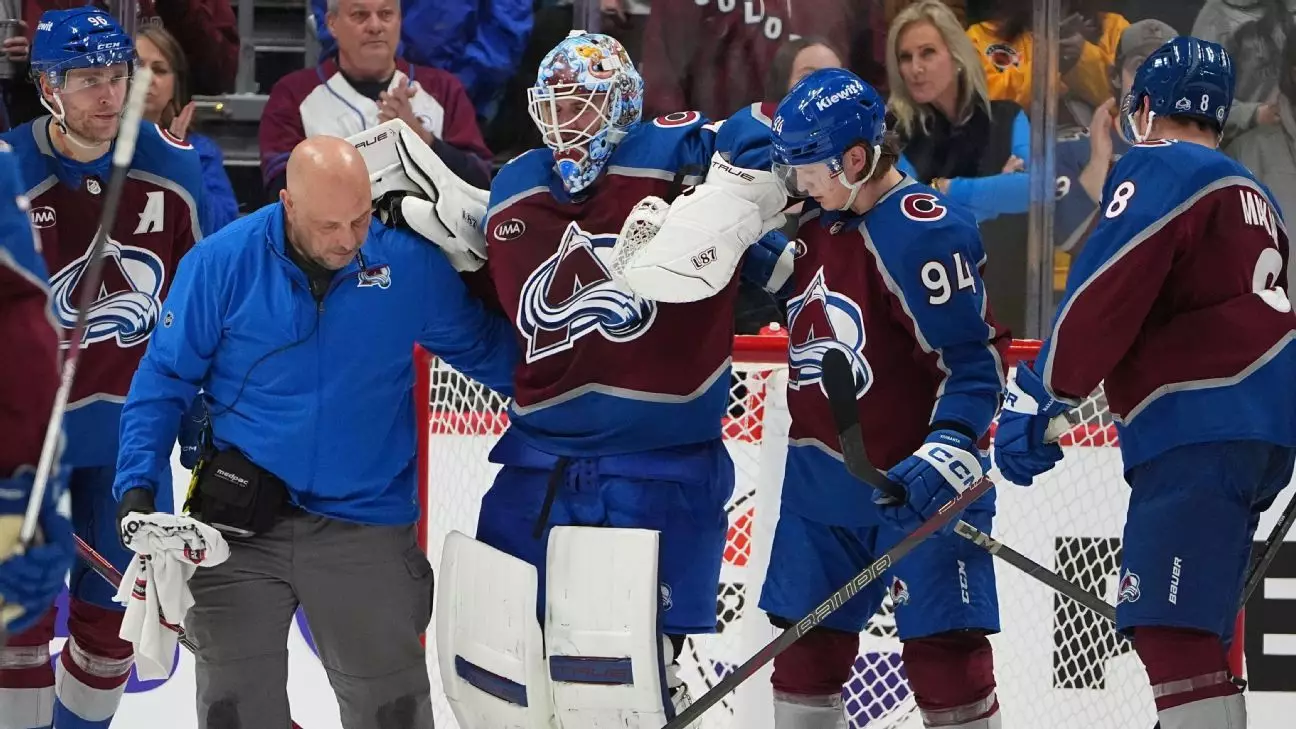The world of ice hockey is one that thrives on intensity, competition, and the constant interplay of strategy and skill. In a recent game between the Colorado Avalanche and the Buffalo Sabres, an incident has sparked an important conversation surrounding player safety, coaching accountability, and the often-criticized decision-making processes of game officials. Avalanche coach Jared Bednar’s fiery response to a controversial no-whistle play illuminated the complexities of the sport both on and off the ice.
A Controversial No-Whistle Incident
During a tightly contested match, tension escalated when goaltender Scott Wedgewood of the Avalanche sustained an injury after Sabres forward Zach Benson collided with him following a push from Avalanche center Parker Kelly. As Wedgewood lay on the ice, showing clear signs of distress, the officials kept the play alive, allowing the Sabres to score while Wedgewood remained incapacitated. This incident sparked outrage from Bednar, who articulated his disbelief at the lack of a whistle, emphasizing that player safety should precede the flow of the game.
Bednar’s assertion was that, regardless of how the play developed, the welfare of the players should take priority. “If he’s hurt and he’s not getting up, and they can evaluate that… the whistle should go,” he stated. This incident presents a fundamental question: when should the game be interrupted for the sake of safety? Bednar believes that officials ought to err on the side of caution, particularly when a player’s injury is evident.
The aftermath of this incident highlighted the Avalanche’s resilience, illustrating how adversity often breeds determination. Despite being down three goals, the team rallied together, ultimately managing a comeback and securing a 6-5 overtime victory. This resilience, however, was overshadowed by Bednar’s frustration with the officiating. His decision to challenge the goal for goaltender interference was both a strategic move and a protest against what he deemed a blatant misjudgment by the officials.
In contemporary sports, the role of officials often comes under scrutiny, and this match was no exception. Bednar’s comments revealed a broader narrative of coaches feeling the persistent pressure to advocate for their players. In reaching out to the league following the match, Bednar is not merely seeking accountability for this one incident but also indicating a desire for improved oversight and standards in officiating moving forward.
Situations like the Wedgewood incident raise critical questions regarding player safety policies within the NHL. While the league has made strides to head off concussions and shoulder injuries through rule changes and stringent protocols, the enforcement of these rules is often inconsistent. Coaches, players, and fans alike are left to wonder if enough is being done to protect players on the ice.
Bednar’s comments reveal a rift in approach to player safety between coaches and officials. The discrepancy between how injuries are evaluated during gameplay versus the post-game analysis reflects a fundamental flaw within the league’s operational system. “They do it all the time for regular players, because of player safety,” Bednar noted, hinting at the need for a universal application of the rules that govern such circumstances.
The incident during the Avalanche-Sabres game serves as a potent reminder of the delicate balance between competitive integrity and player safety in professional sports. It highlights the responsibility placed on coaches like Bednar to advocate for their players while simultaneously driving home the importance of efficient and just officiating. The conversation sparked will undoubtedly push the NHL to reflect on its safety protocols, aiming for an environment where players can compete fiercely without fear of undue injury. As the season progresses, this incident may become a catalyst for positive change within the league, compelling officials to uphold the very safety standards that every player deserves. The pursuit of excellence in sports should never compromise the safety of those who play it.


Leave a Reply